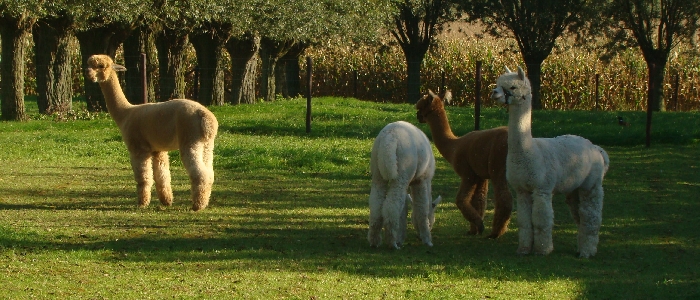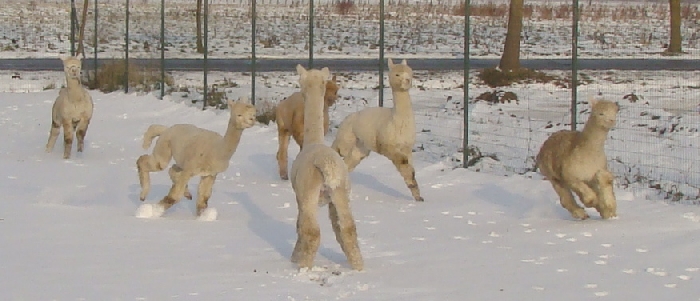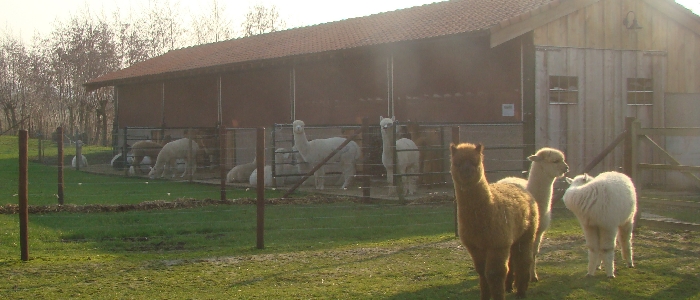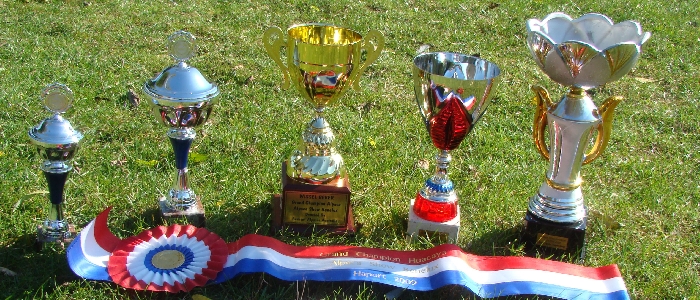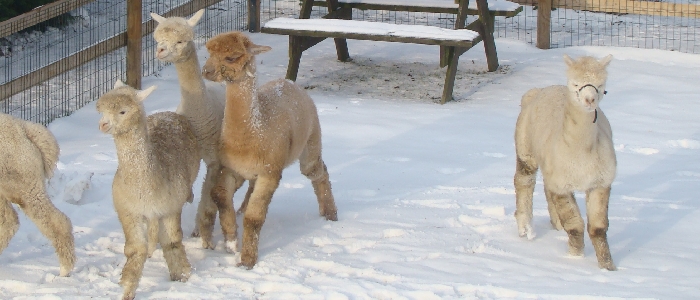Overwegen om een Alpaca te kopen
Considerations in buying your Alpaca
By Nic Cooper, Southern Alpacas Stud
The alpaca industry is constantly changing.
The first alpacas brought into the country in the late 1980?s were different to those imported in the late 1990?s. Bloodstock brought recently from Australia (USA genetics ex Peru) were a step up, and now we see imports direct from Peru.
The quality of the alpaca in NZ has improved immeasurably over the past 12 years - within a single generational lifespan of the animal. It has been achieved far faster than on-farm breeding programmes, by replacing current "models" with better models through import.
In selecting your alpaca (either females or good stud services) basics are good health, good reproductive capability, zero genetic fault, and type/color to fit your own breeding goals/ business plan.
But you need more. You need the 4 "P"?s of alpaca purchase.
Bloodstock producers, in selection of good bloodlines, look at (in order of importance):
1) Progeny: genetic quality (genotype) is best judged by looking at the alpaca?s offspring -- not just one or two, all of them. Consistently good progeny equates to strong genetic strength.
Progeny can be measured by visual inspection or judged in the Show Ring. Looking at progeny is an excellent way of assessing underlying genotype.
2) Pedigree: younger animals, or newer studs, have no progeny. In this case the pedigree of the alpaca (available on two registries -- USA and Australasia) assists judgement.
Parents with good progeny records. Siblings with Show winning record. Sires used by respected breeders. These are indications that the offspring will carry the quality traits of the parent. Pedigree is a reasonable way of assessing genotype.
Pedigree is harder for the newcomer, because it asumes prior knowledge of world renowned bloodlines. This means research. Naming a stud " Captain Fantastic", does not mean it is fantastic.
But remember that Australia and USA have had registries for 10 years now, and most of the "venerable ancestors" have significant numbers of offspring on the registry, winning shows, and acting as successful studs in their own right.
South American countries have not yet developed registries. Imports therefore have no pedigree (and usually no progeny) data to assess.
3) Phenotype: how an alpaca "looks". Shear data taken at a time and place, and maybe how well the photo was taken. When progeny and pedigree data is not available, phenotype is all there is to assess. Phenotype can be a reasonable proxy for underlying genotype. Unfortunately not always. Although you can gain some confidence by selecting from one of the top ranches.
NZ research shows phenotype -- particularly fibre characteristic -- is immensely effected by environment. Davis concluded on alpacas imported to NZ from South America that fibre micron blow-out from the move to NZ averaged 6.8 micron. Some alpacas coarsened 11.5 micron, yet others had very little blow out. (ARJ Winter/Spring 1996). The practical problem is you do not know where each individual alpaca sits on the spectrum, until about 2 years after import!
A subjective view looks at the relative success of stud accoyo males imported into USA in 1994/5 (source -- "Accoyo" book.). Some of these have had a tremendously positive impact on the alpaca industry in USA, Australia and NZ. Many others faded into mediocrity or obscurity. Impossible to pick which at the time of import.
4) Price: clearly the price of your alpaca has to fit your pocket. Generally higher quality animals carry higher prices. But beware the reverse price "snob" syndrome. Whilst a cheap price generally means lower quality, a higher price does not of itself guarantee better quality.
Conclusion
It is necessary to have infusion of new blood into what is, in NZ, a small gene pool. But long-term sustained improvement in the herd in NZ has to drive from proven genotypic quality, not environmentally biased phenotypic data.
And at some time, the development of the breed has to be moved forward by solid breeding programmes, not expensive overseas purchases.
[2009-02-23 door Nic Cooper]

